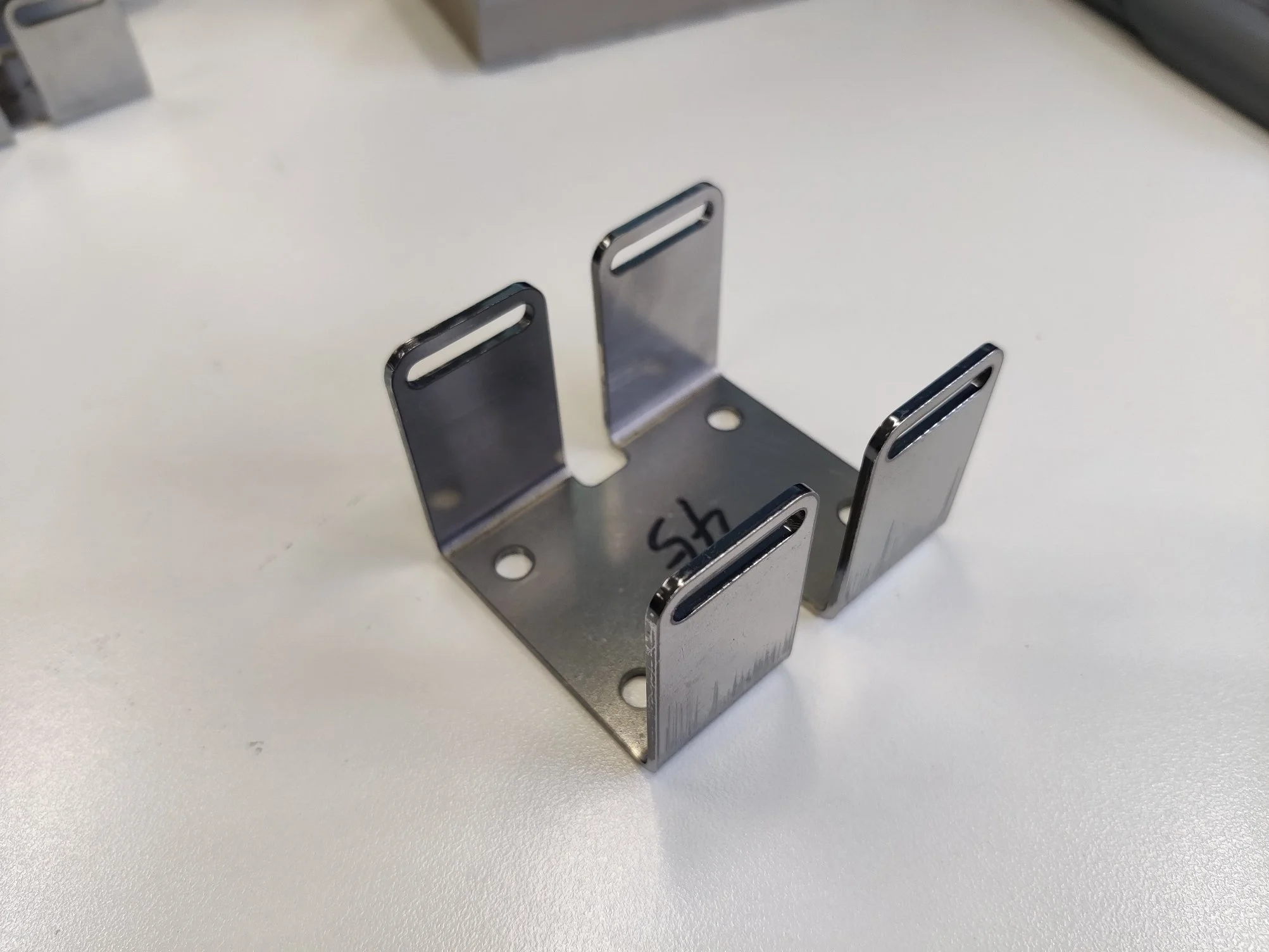Prototyping
3D printing
Tolerance analysis
Test rig building
Realising
Procurement with Chinese suppliers
Cost analysis
BOM creation
Data management
Technical drawing
Patenting
Research
Market research
Standards interpretation
Ideating
Design
Design for manufacture
Design for assembly
Iterating
Modelling
Solid modelling (SolidWorks)
FEA (SolidWorks)
Rendering (PhotoView 360)
The Brief
“Often when building balconies or terraces, builders find there is minimal build height for the substructure to support the decking. It is therefore necessary to design a new type of adjustable support pedestal that is capable of much lower heights than traditional pedestals, whilst being fire-resistant to enable it to be used at height and allow for a sloped surface if necessary.”
Existing Designs
Existing pedestals on the market were overwhelming one of two styles; tall pedestals manufactured from steel or polypropylene with two halves that screwed together to adjust their height, or short pedestals manufactured from polypropylene with two halves of concentric steps enabling the height adjustment.
The first style would not be short enough for the use cases required, and the second style was not fire-resistant so could not be used at height, and would not allow for a slope.
First Ideas
The first idea was to try and adapt the existing low lying pedestal made from polypropylene, and fire-resistant materials instead. Ultimately I attempted to come up with a design from cast steel, using a similar concentric steps idea to the polypropylene version.
The whole design was slowly adapted to be as manufacturable as possible accounting for the casting process that was being used, using draft angles, fillets, consistent wall thicknesses, and simplifying features.
Despite multiple iterations of the idea and working closely with the Chinese manufacturer to reduce the price as much as possible to make it viable, it was found that the product would be too expensive in this design, and as such would have to be redesigned.
Design Pivot
Given the opportunity to redesign the product, we reflected on the product’s use case. It was then decided that two product types would be pursued, one with the original use-case primarily for paving slabs and for use on flat surfaces, and another for use on balconies, capable of being screwed onto balcony steels and of holding joists.
Design for balcony steels
After experimenting with shims of various shapes and sizes, it was found that the cheapest way to manufacture them would be to use a square shape, and to make the bracket to hold them more complicated. The bracket contains holes at its base to fasten the system to a balcony steel, and slots in the uprights to fasten a joist to the pedestal.
Design for flat ground
For the pedestal for use on flat ground, the design was adapted to follow what was learnt for the balcony pedestal. Larger square shims were used to support the larger paving slabs, and features designed to fasten the pedestal to the balcony steels or a joist were removed. Extra features to allow pedestals to be stacked for transport were added, stands can be pushed down for different paving slab arrangements, and holes around the edge allow water to drain.
Samples
Having converged designs, the next step was work with the suppliers on samples, to test both versions of the product worked as expected. In response to these samples, small changes were made but no further major revisions were required.
Final Design
With the design fully iterated upon, the product was handed over to the sales and procurement teams. The first sale of the product was made in December 2022, and the products continue to be sold through EnviroBuild.
Patent Application
As the design process neared completion, I also applied for a patent for the product. This required working closely with a law firm to write up the patent. I needed to write down in detail the function of the product system, and which parts were original innovative and were therefore part of the patent. This also involved back and forth with the examiners, as they tried to show similar inventions and I argued why this product was different.
The patent was published in March 2023, with application number GB2112106.6, and publishing number GB2610187.












































